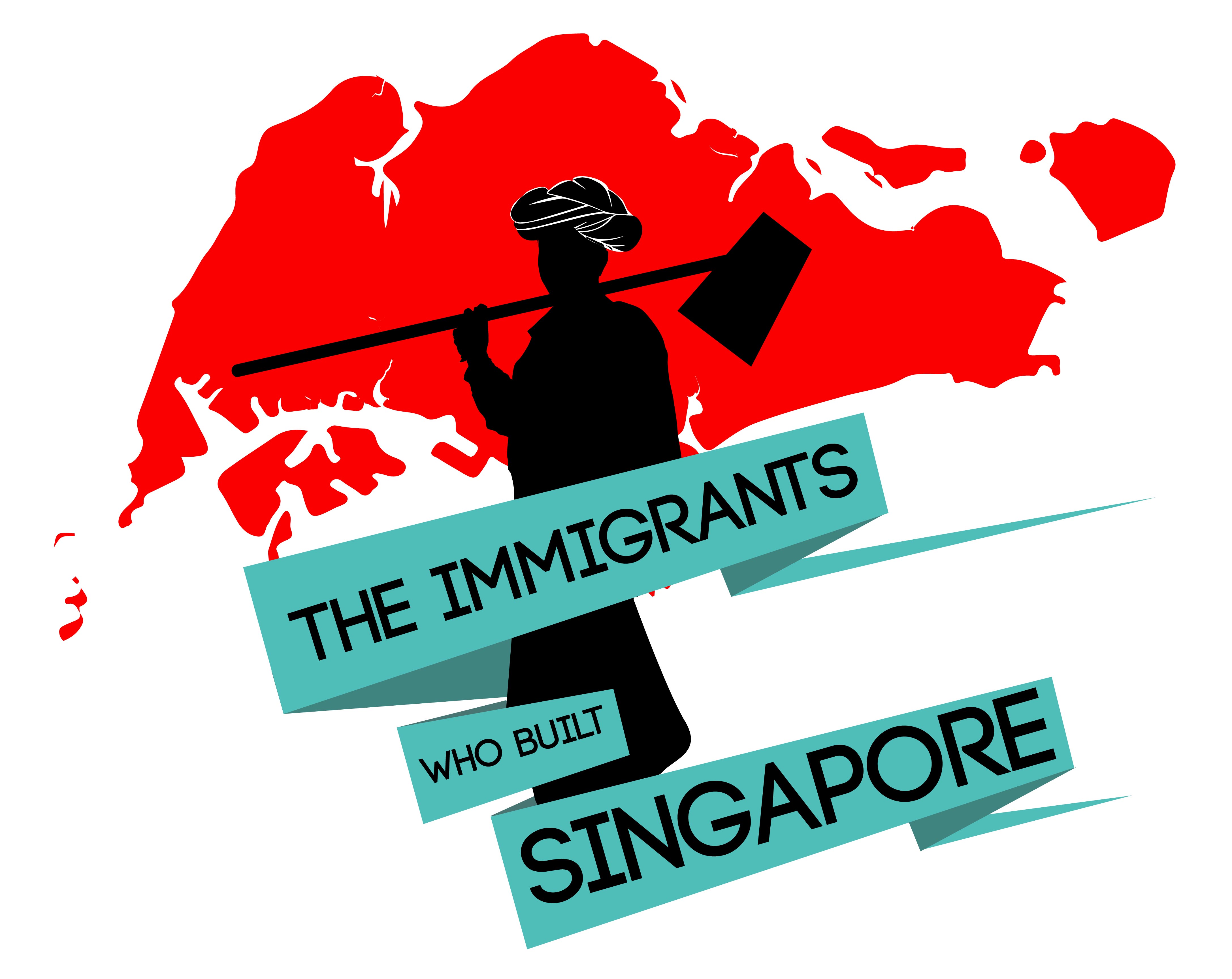
Immigration and immigrant workers in Singapore have been closely associated with Singapore’s economic development since the 19th century. While in the early years of the settlement the large demand for labourers stimulated a slave trade, Stamford Raffles stopped this in 1823 – out of a concern for workers’ welfare.

Convicts from British India were brought to Singapore to clear the jungle, build roads and erect buildings.

The Indian community had grown to be the second largest in Singapore. Indians worked in diverse roles, including the the police force. Different groups worked in different industries for example South Indian workers toiled in the dockyards, railways and later rubber plantations, and Sikh, Gujarati, Sindhi and others worked as merchants selling textiles and jewellery. There were also the Chettiar money lenders, and dhobis or laundrymen. Later the Indians began cattle rearing and trading businesses also.

Many Indians left to work in the Malay states. From then on, those who arrived from South Asia were largely English-educated. They served in the public service working in white collar jobs as administrators, interpreters, lawyers and teachers.
 As a result of the Great Depression the government places restrictions on immigration.
As a result of the Great Depression the government places restrictions on immigration.
 The government encouraged the immigration of close to 200,000 women to address the gender gap in the population. While many of these married, some of the women had vowed not to. These were the Samsui women from Guandong, with their rectangular-shaped red headdress and navy blue samfoo, who worked on rubber estates and construction sites; and the Cantonese amahs, or ma jies, who worked as servants in wealthy households.
The government encouraged the immigration of close to 200,000 women to address the gender gap in the population. While many of these married, some of the women had vowed not to. These were the Samsui women from Guandong, with their rectangular-shaped red headdress and navy blue samfoo, who worked on rubber estates and construction sites; and the Cantonese amahs, or ma jies, who worked as servants in wealthy households.
 In 1957 the Citizenship Ordinance was passed, finally giving many of the immigrants the right to call Singapore their home.
In 1957 the Citizenship Ordinance was passed, finally giving many of the immigrants the right to call Singapore their home.
Demand for labour workforces continued to grow following Singapore’s independence in 1965. The need for labour has remained since then, in part because Singaporeans who have a choice prefer not to work in the types of jobs the migrants fill. However, to many men and women from around the region, Singapore work permits seem like a ticket to a better life.
Work permit holders remain strictly regulated, but, now they are regarded as vital and valuable contributors to the nation. Whether it’s a mechanic who motorbikes across the Causeway daily from Malaysia, or a bricklayer staying on a building site, or a maid helping to care for Singaporean kids, they are people the country can’t do without.
Sources:
http://www.channelnewsasia.com/news/singapore/migrant-workers-in/2344096.html


















